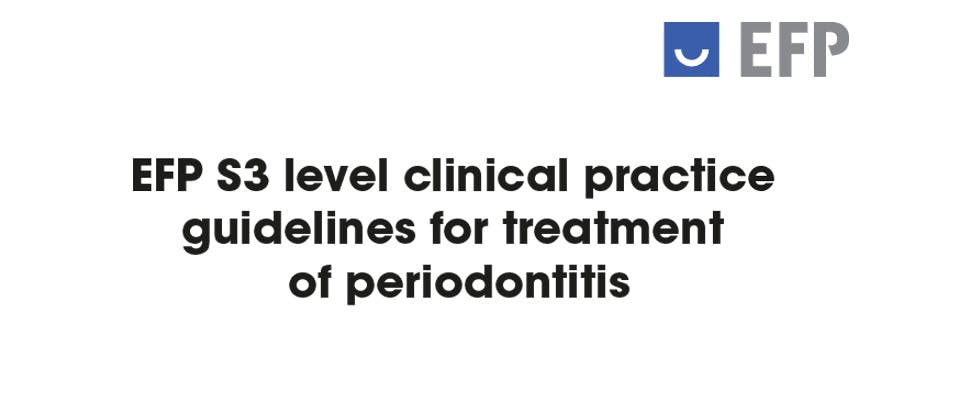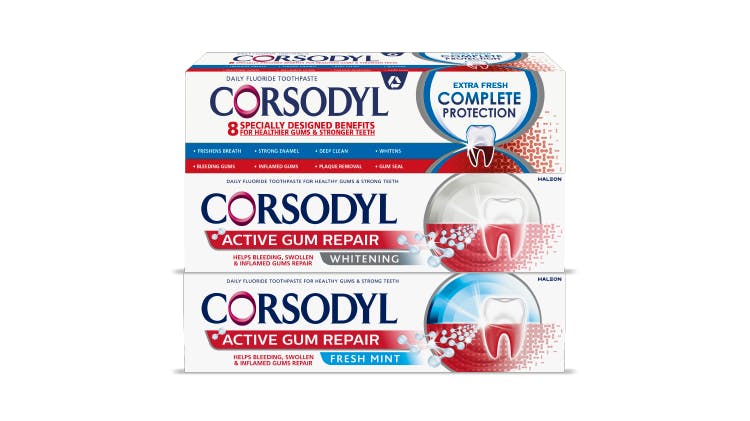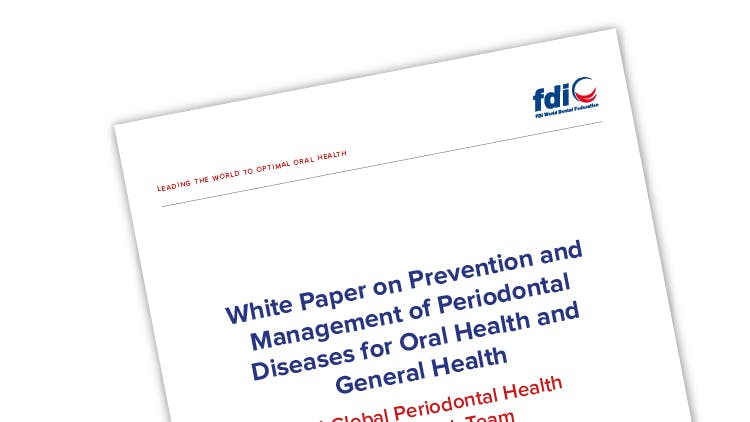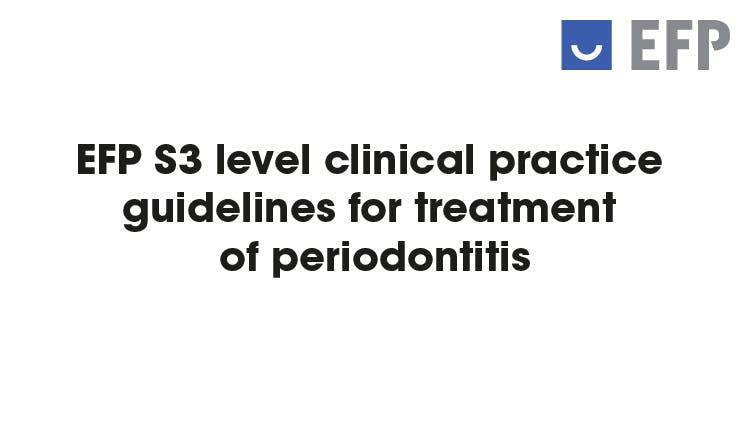Managing Gum Disease in Patients

Managing periodontal disease
As highlighted in the causes and mechanisms section of this site, it is universally agreed that periodontal diseases are initiated by plaque bacteria.1 Whilst regular dental visits and dental prophylaxis plays an important role in maintaining gum health, it is the action of patients between dental visits that makes the difference. For this reason, any treatment of periodontal disease, from early stages or signs of inflammation, needs to start with effective daily toothbrushing and interdental cleaning.
It has been widely acknowledged by the EFP and AAP that the adjunctive use of oral hygiene products such as specialist toothpastes or mouthwashes may also help enhance plaque removal. Find out more about Corsodyl products.
In addition to enhancing plaque removal it is important to be aware of any risk factors which may leave patients at increased risk of developing periodontal disease. Advice could be provided to sign post patients for smoking-cessation support or patients could be referred to their GP to help improve metabolic control for diabetes.

Supporting patient behaviour change
Whilst behaviour change may hold the key to helping patients to achieve gum health, it is a journey.
From working with experts on behaviour change it is clear that just sharing advice or information with patients may not be enough to change behaviour or motivate them. They may not understand the disease symptoms or consequences and many patients may not engage with gum disease as a serious condition that they can act upon.

EFP S3 level clinical practice guidelines for treatment of periodontitis
In July 2020, the European Federation of Periodontology published the first evidence-based treatment guidelines for periodontitis.2 This new guidance has been developed to help inform treatment and benefit patients from around the world.
It was drawn up as part of XVI European Workshop on Periodontology where 90 experts from 19 countries evaluated 15 systematic reviews on different forms of periodontal therapy to develop recommendations for the first 3 stages of periodontitis as defined in the new global classification.2

For all periodontitis patients
According to the clinical practice guidelines, the first step of therapy is aimed at behaviour change to ensure improved supra-gingival plaque removal and risk factor control:2
- OHI, adjunctive therapies for gingival inflammation, professional mechanical plaque removal (PMPR)
- Risk factor control e.g. smoking cessation, improved metabolic control for diabetes

For all periodontitis patients in teeth with loss of support/pocket
This step is aimed at controlling subgingival calculus and biofilm. Includes use of:2
- Adjunctive physical or chemical elements
- Adjunctive host-modulating agents
- Adjunctive subgingival locally delivered antimicrobials
- Adjunctive systemic antimicrobials

For treating areas not responding to step 2
This step is used to gain further access to gingival instrumentation or to regenerate/resect lesions that add to complexity and may include:3
- Repeated subgingival instrumentation with or without adjunctive therapies
- Access flap periodontal surgery
- Resective periodontal surgery
- Regenerative periodontal surgery

Supportive periodontal care
By combining preventive and therapeutic indications this step aims to maintain periodontal stability in all periodontitis patients in the first and second steps of therapy.2 If recurrent disease is detected in recall visits patients may need re-treatment. Healthy lifestyles and oral hygiene form a part of this stage.
Useful resources for the management of periodontal disease
Offering effective gum disease management to help your patients on their journey to optimal gum health
Causes and mechanisms
Find out about the causes and mechanisms behind periodontal disease.
Impact on patient quality of life
Find out about the impact periodontal disease has on patients’ daily lives.




